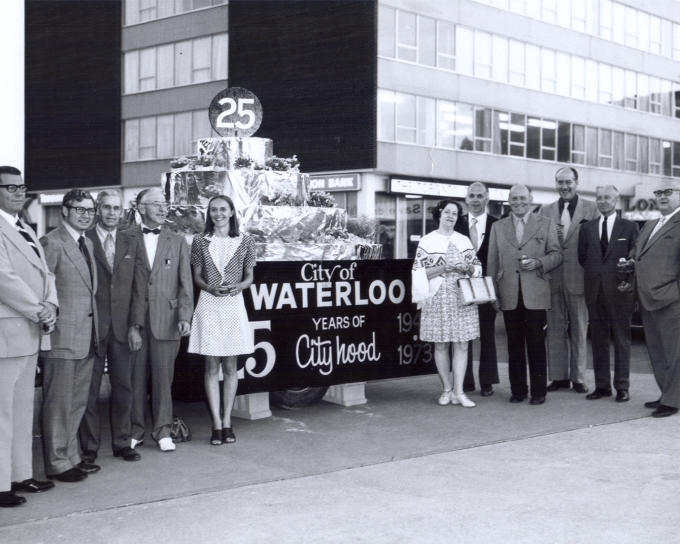A Mercantile History
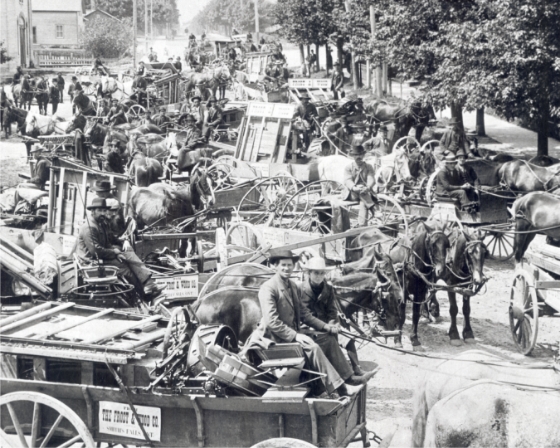
1803
In 1803, Pennsylvania Mennonites purchased land which later became Waterloo Township, and established the heart of a large German-speaking settlement.
The neighbourhood and surrounding areas of Dorset and Princess street became a bustling area for merchant trade and commerce.
1816
In 1816 the area was elevated to township status and named Waterloo after Wellington’s famous victory over Napoleon in 1815.
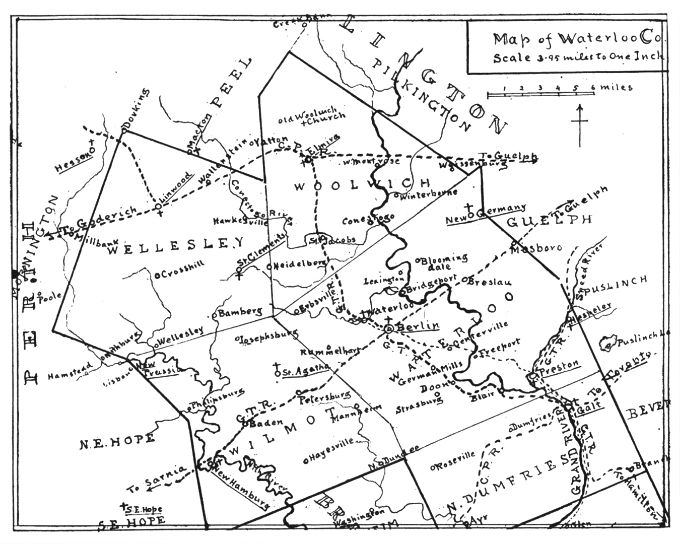
1863
Exterior of building located at 28 King Street north at Duke (now Dupont) Street.⠀
The building was owned by Waterloo's first insurance company, the Waterloo Mutual Fire Insurance Company, established in 1863.
In 1910, Berlin was the first inland city to have access to inexpensive power from Niagara Falls, which reinforced the industrial growth of the communities. Waterloo became a centre for the insurance industry and since 1911, of post-secondary education.
The impact of this has been long lasting and still visible in the region today.⠀
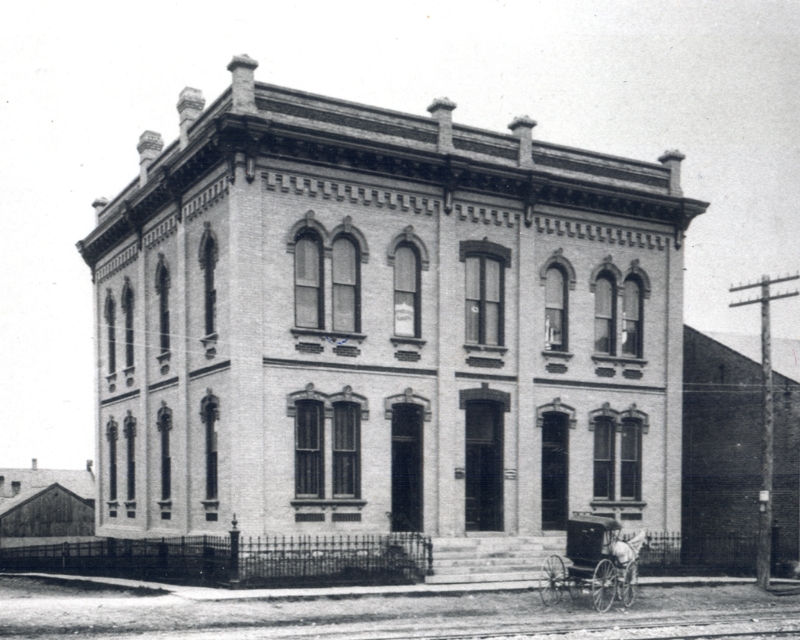
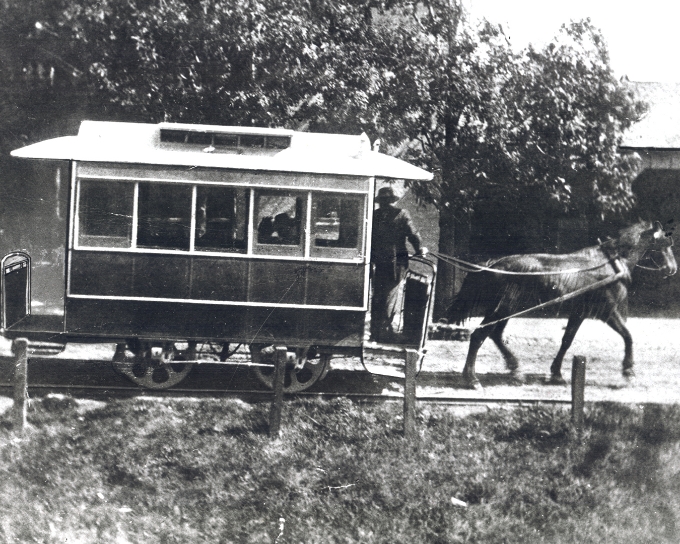
1889
Horse drawn railway cars operated in the region between 1889 and 1895.
1889
The exterior of the Zimmermann House Hotel, owned by Henry Zimmermann Proprietor. Crowds of people on the street in front of the hotel and on the balcony above and sitting at the windows
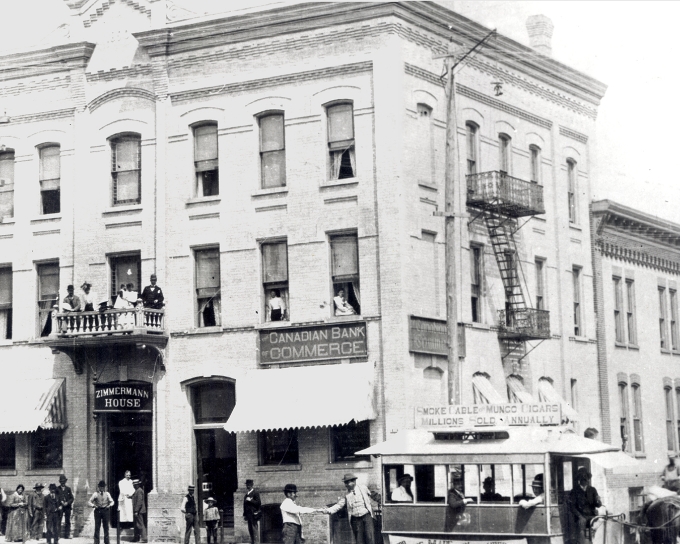
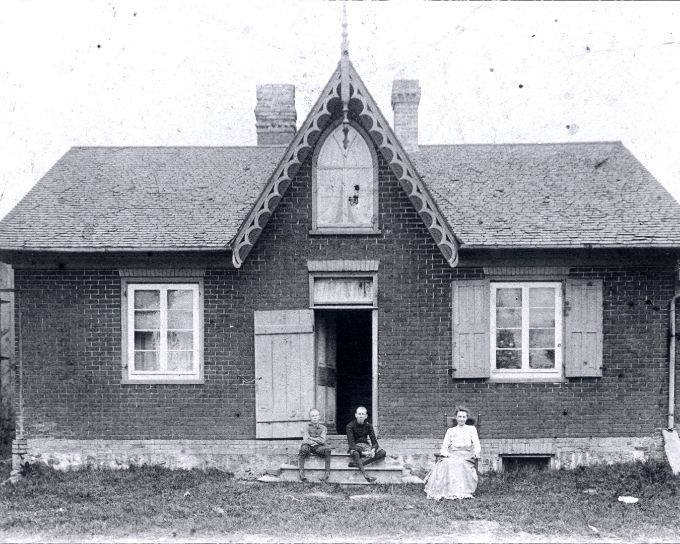
1890
The exterior of house at 26 Dorset (formerly Water) Street owned by the Schaefer family. Two boys, Charlie and Norman and their mother sitting in front.
1890
In 1890 the Village of Waterloo and the local board of trade acquired the 25-hectare Jacob Eby farm to create the town's first park. Known today as Waterloo park.
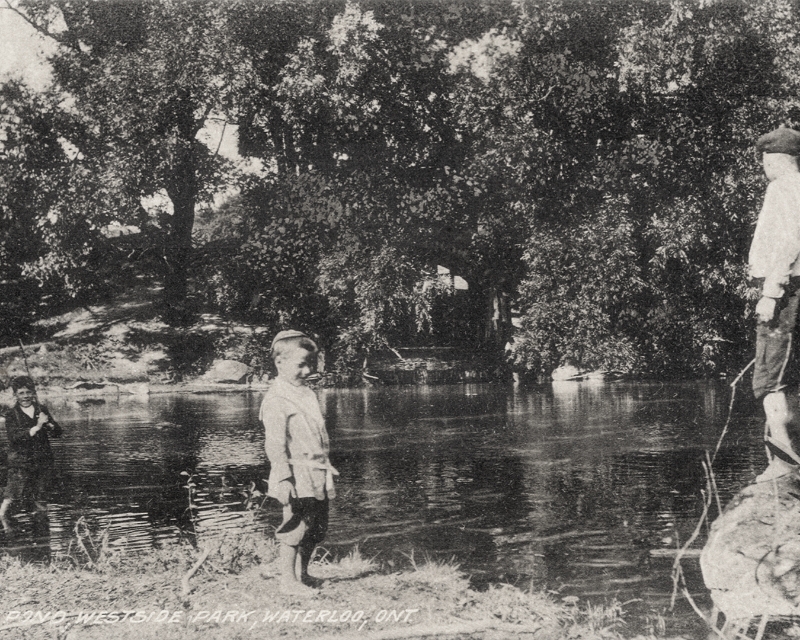
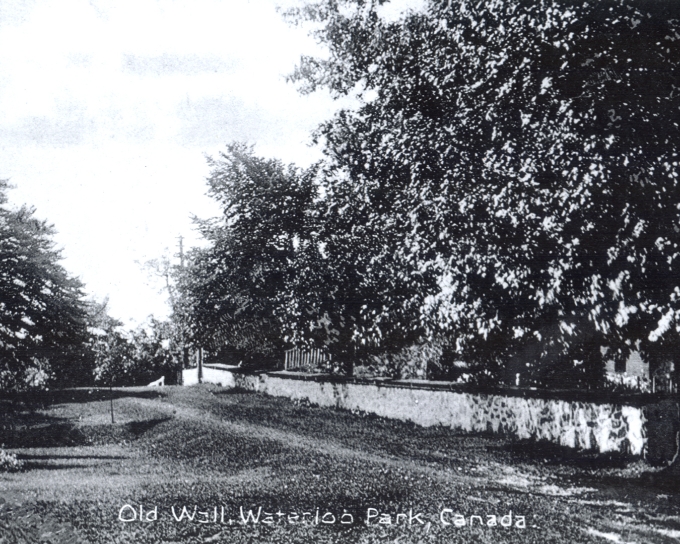
1891
A postcard from 1891 of a view of Waterloo Park with a low stone wall on the right side.
1892
In 1892 men can be seen working on a rail line at the north east corner of King Street and Erb Street.
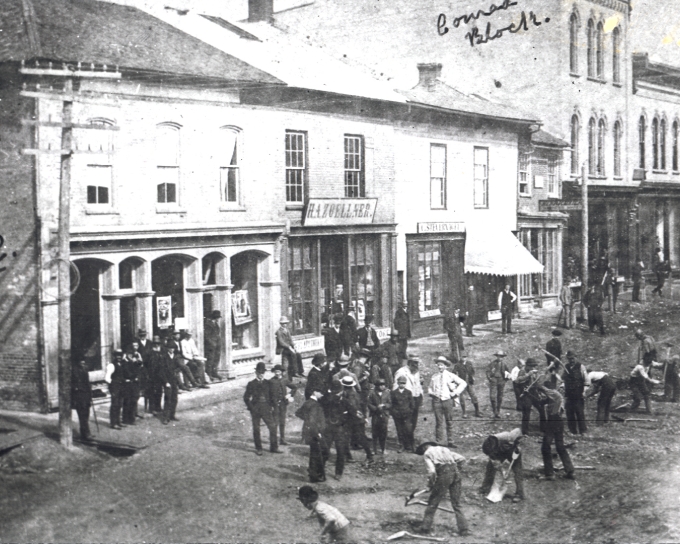
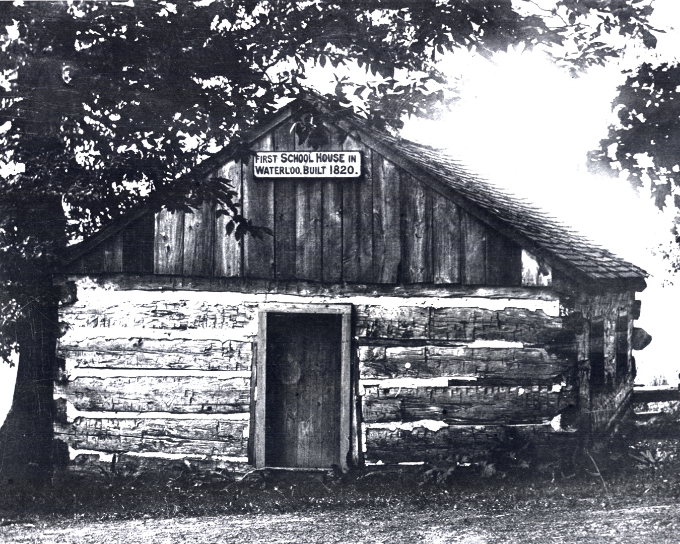
1893
Pictured here is the first school building in Waterloo, it was built in 1820 and moved to Waterloo Park in 1893 where it was restored.⠀
1897
Waterloo Park was originally called Westside Park until the early nineteen hundreds. This pavilion was constructed in 1897 and removed from the park in 1972.
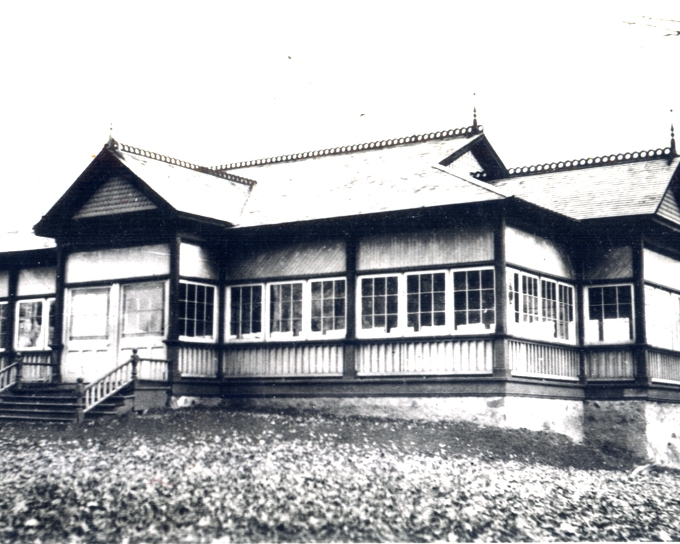
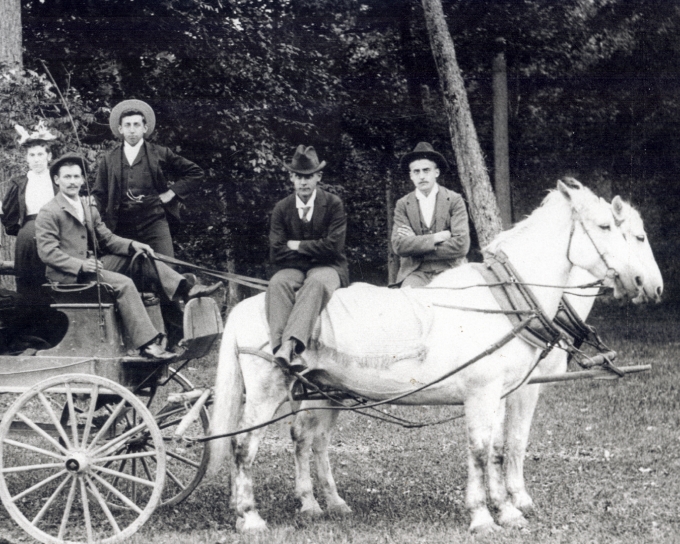
1900
A group of men and women enjoying a wagon ride though Waterloo Park drawn by two beautiful white horses.
1903
The circulation desk at the first library building at Albert and Dorset streets.⠀
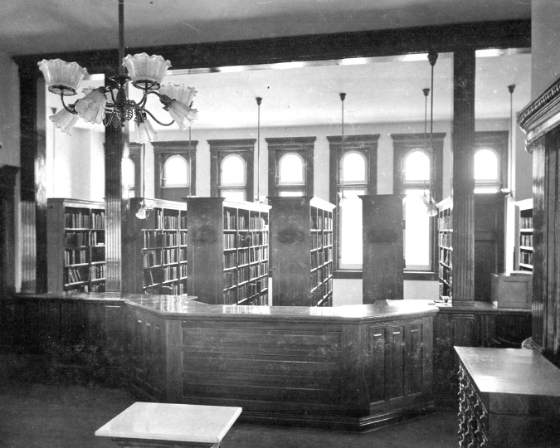
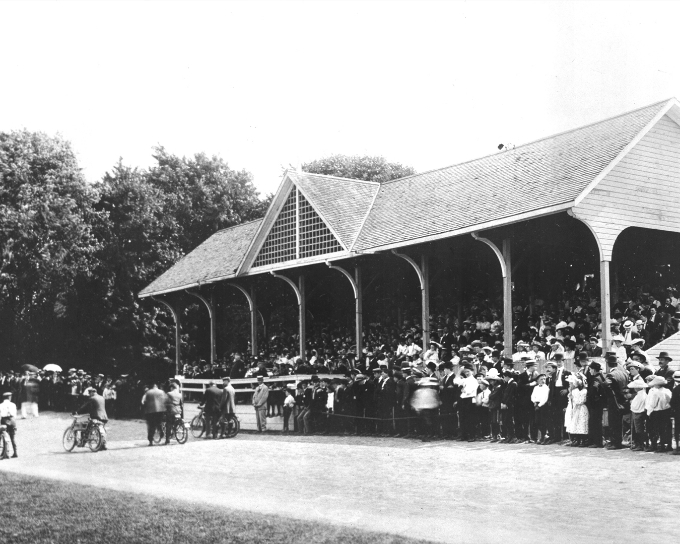
1909
A view of the grandstand in Waterloo Park and the racing track with several motorcycles lined up preparing to race.
1910
A group of Waterloo merchant businessmen picnicking at Waterloo Park.
Some things never change, who doesn't love a picnic in the park?⠀
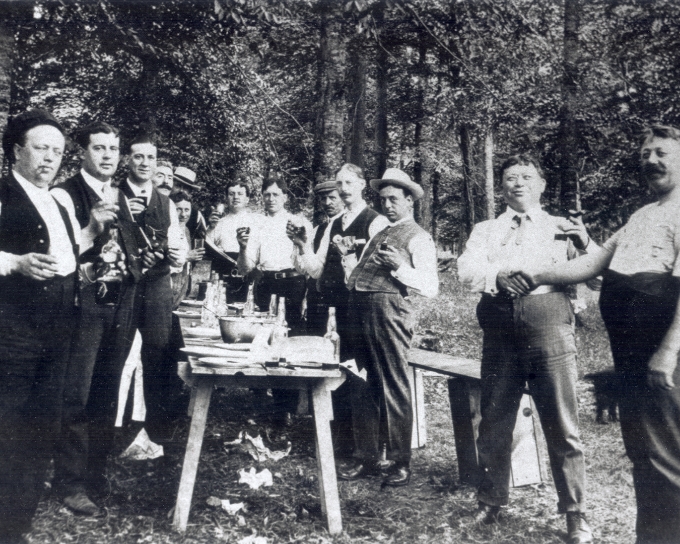
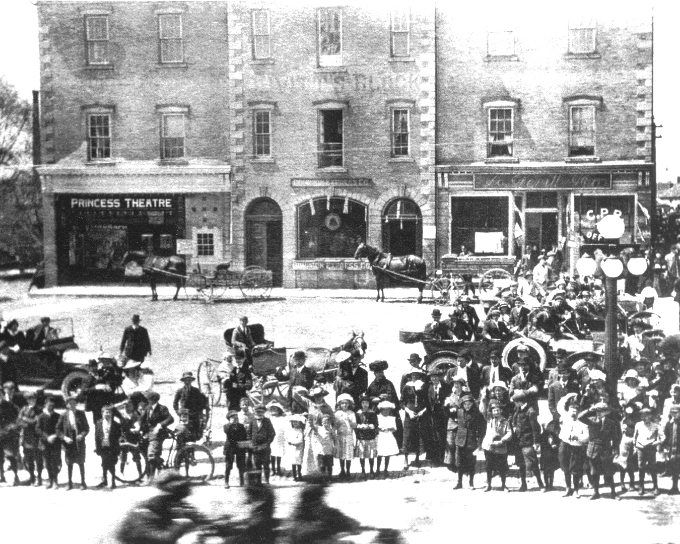
1910
Visible are the Princess Theatre, the Dominion Express Company and M. Devitt and Company, General Store (The Devitt Block). The Princess Theatre was Waterloo's first street-level movie house.
The Devitt Block was demolished in 1960, but would be found today in the parking lot of the Waterloo Bank of Montreal.
1912
The Waterloo Fire Department members standing outside Albert street station with two horse-drawn fire vehicles.
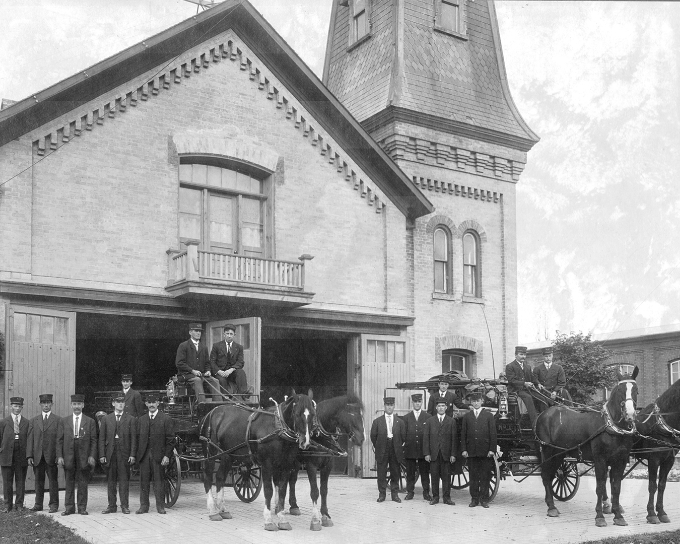
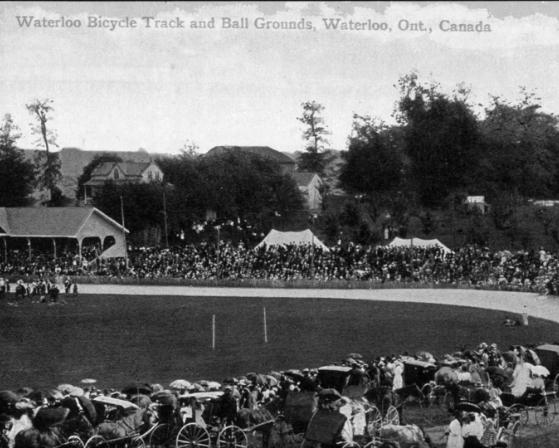
1915
A postcard from 1915 of the bicycle track, baseball field and grandstand at Waterloo Park during an event. Note the spectators, horse-drawn carriages and tents in the background.⠀
1916
John Forsyth was a Canadian shirtmaker. He founded the John Forsyth Shirt Company. The Forsyth family began its clothing business in Waterloo in 1903 with manufacturing at Duke and Young streets in downtown Kitchener for 88 years.
Workers are pictured here in the Forsyth Plant and in 1916 Forsyth Company bought the former Market Hotel for manufacturing.
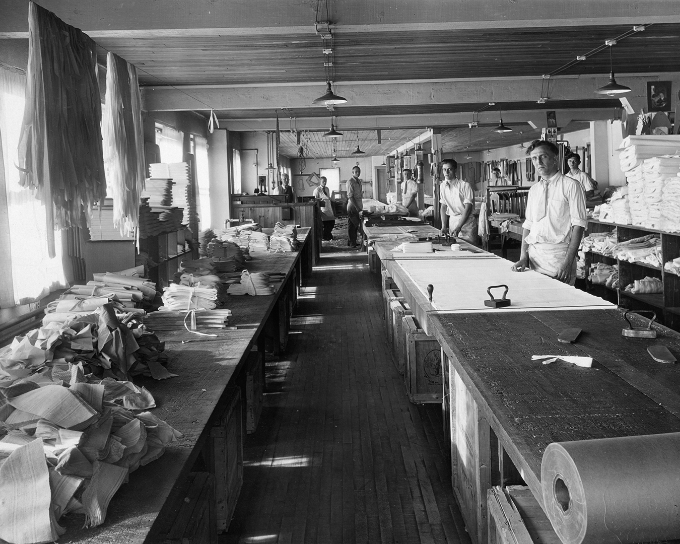
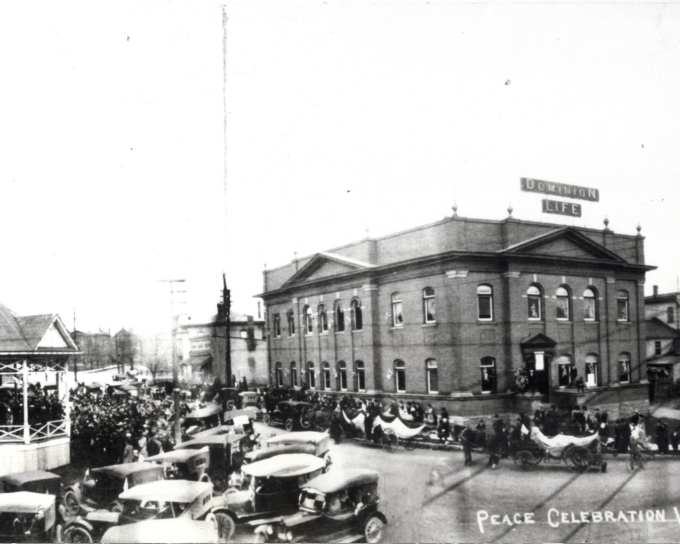
1918
Armistice Day Celebrations in front of Waterloo Town, which later became Waterloo City Hall, Hall at Erb and Albert Streets on November 11, 1918.⠀
1920
The location of this tennis court is unknown, but it was possibly taken at the Church of the Holy Savior on Allen Street in Waterloo.
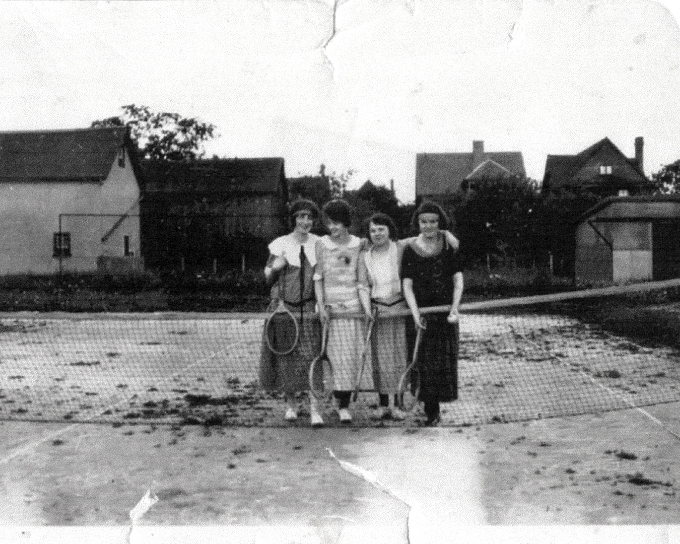
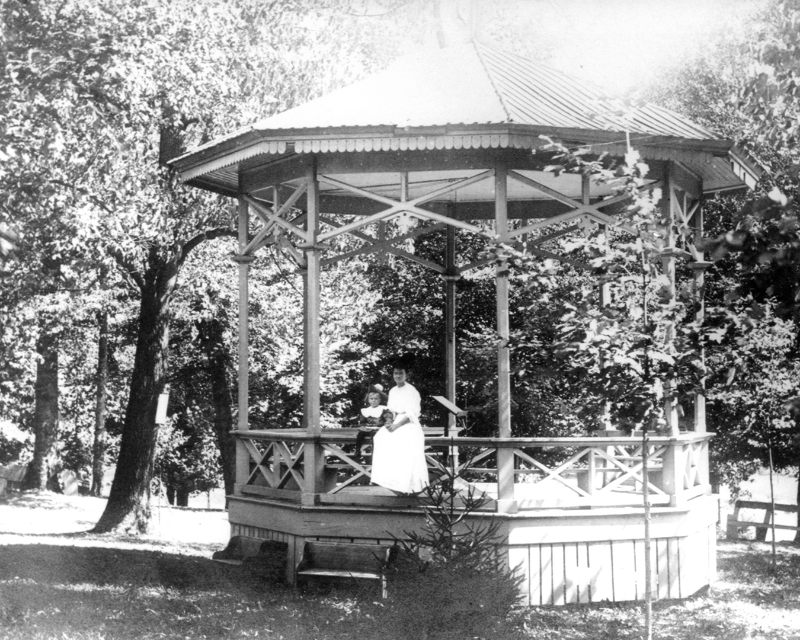
1920
Mrs. Addison C. Moyer and son Victor at the first bandstand in Waterloo Park.⠀
1920
This bandstand, the first outside of Toronto, was donated to the Park by the Seagram family in 1920. It was replaced by the Waterloo Lions Memorial Pool in 1969.
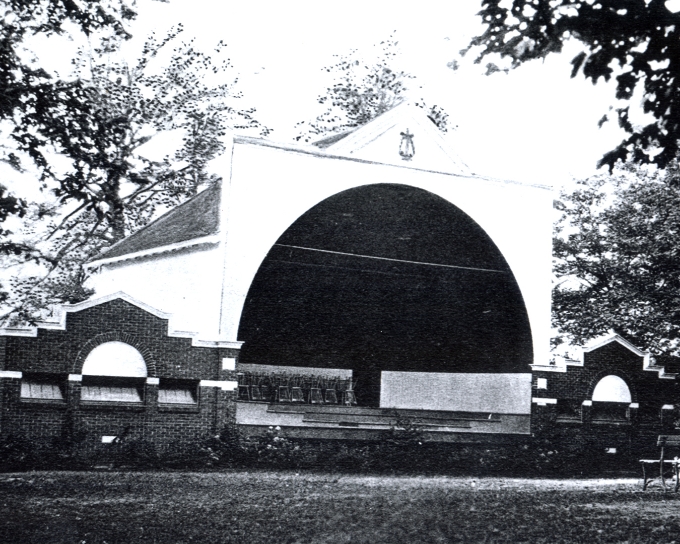
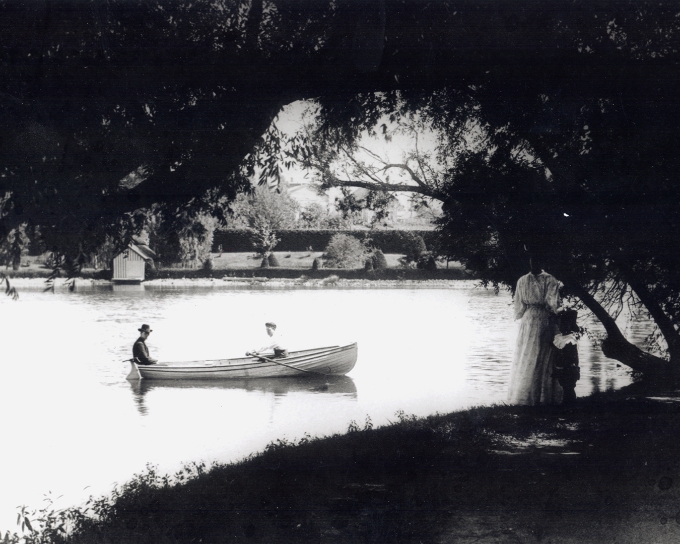
1920
Woman rowing while a man sits in the back of the boat on Silver Lake in Waterloo Park. Enjoying a picturesque day in the park.⠀
1925
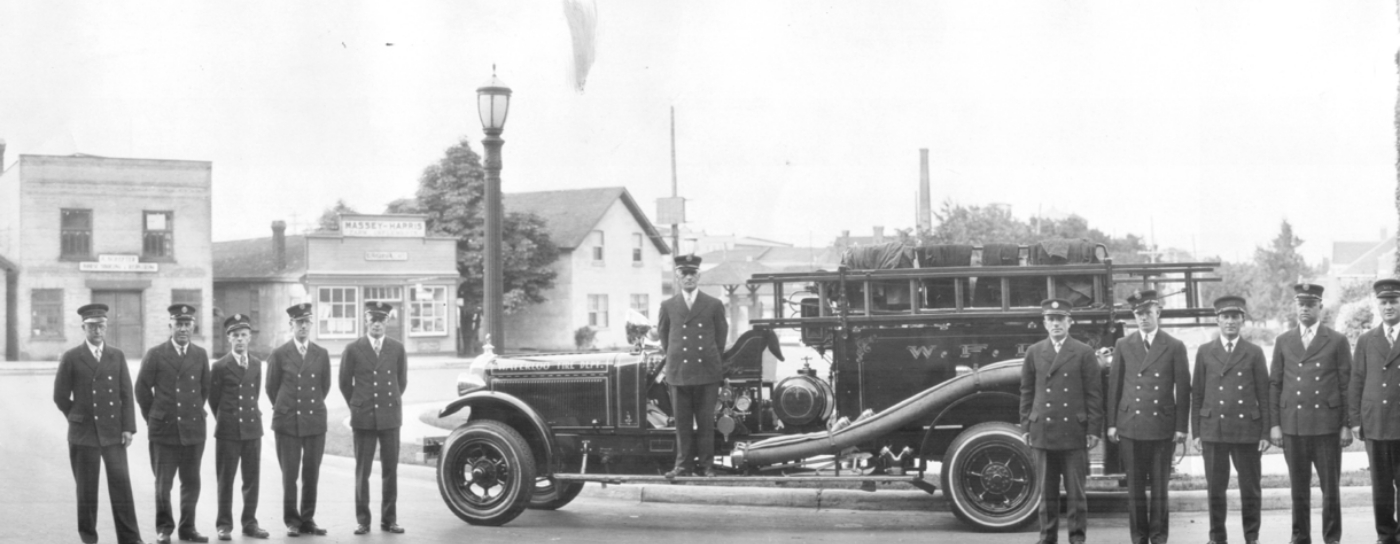
Group portrait of members of the Waterloo Fire Department posing on Albert Street at Erb Street in 1931. Note the street lamps, town (later city) hall in the background and fire hall and farmer's market building in the background at right. The truck is a 1925 Godfredson ladder truck. In background at 23 Erb Street West can be seen Massey-Harris Company Limited, dealer of agricultural machinery, and A. Schefter, Blacksmith.
1927
The first automotive pumper fire truck in Waterloo was acquired on June 11, 1927. The fire hall was demolished in 1967.
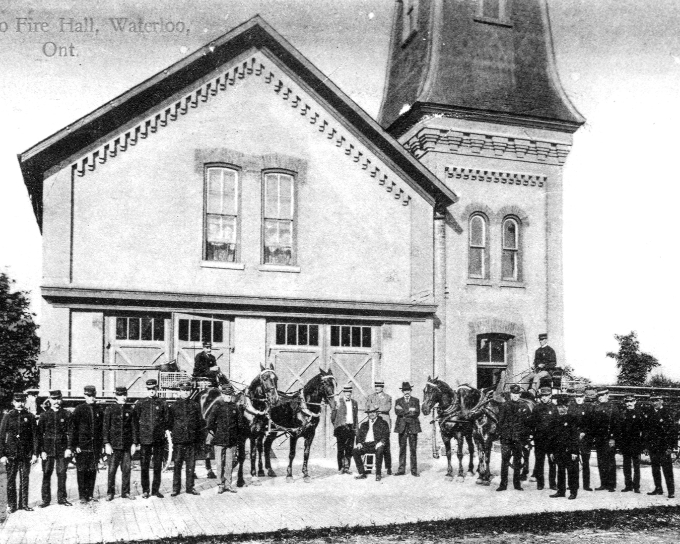
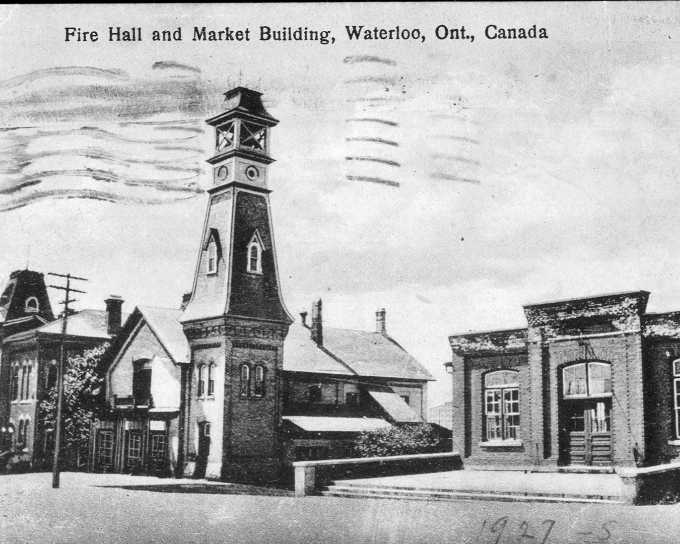
1927
A postcard from 1927 shows the fire hall which was built circa 1870 and demolished in 1967
1929
A postcard shows people enjoying a sunny day in the lake at Waterloo Park.
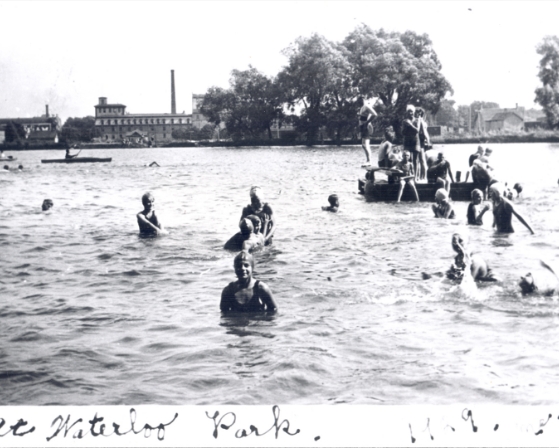
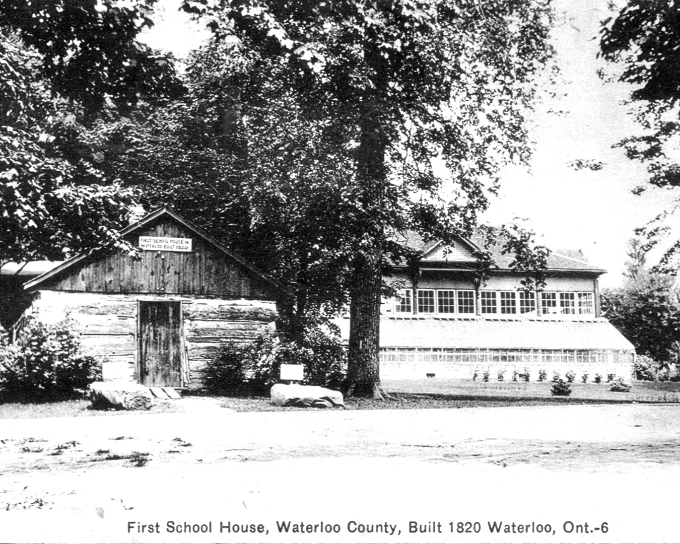
1937
A postcard from 1937 of the first school building in Waterloo. The school was built in 1820 and moved to Waterloo Park in 1893. The park pavilion can be seen in the background.
1940
A photo of swimmers in Silver Lake located in Waterloo Park.
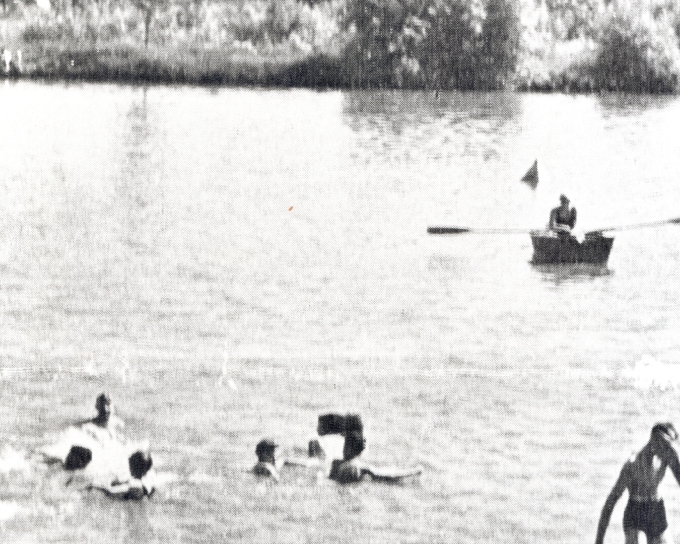
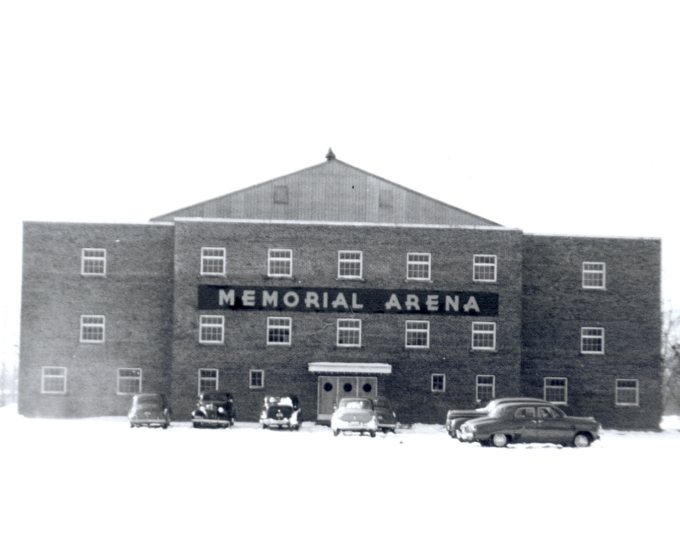
1946
Waterloo Memorial Arena was built in 1946 and dedicated to local residents who died in the First and Second world wars. The arena was built by Silver Lake in Waterloo Park on the site of a former garbage dump. The building was condemned in 1987, and the roof and walls were replaced with a plastic air-filled dome. The arena was demolished in 2001, and the Perimeter Institute for Theoretical Physics was built on the site.
1948
Waterloo was incorporated as a city in 1948. Photo of Ontario Premier George A. Drew displaying Waterloo's cityhood proclamation at the formal dinner to inaugurate city status.
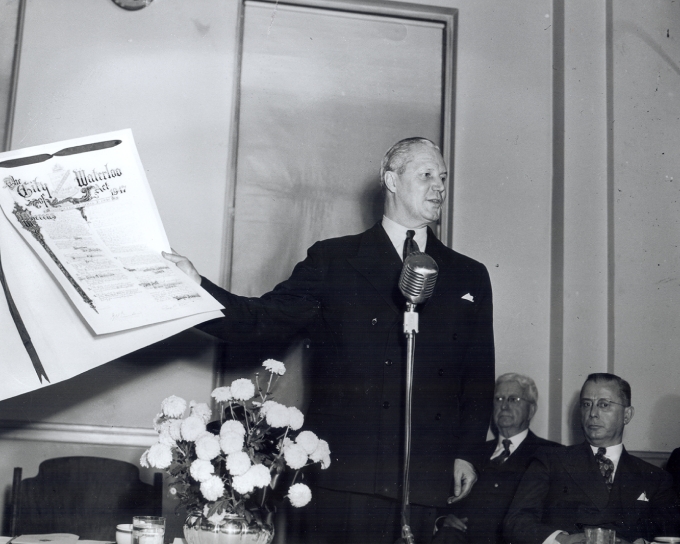
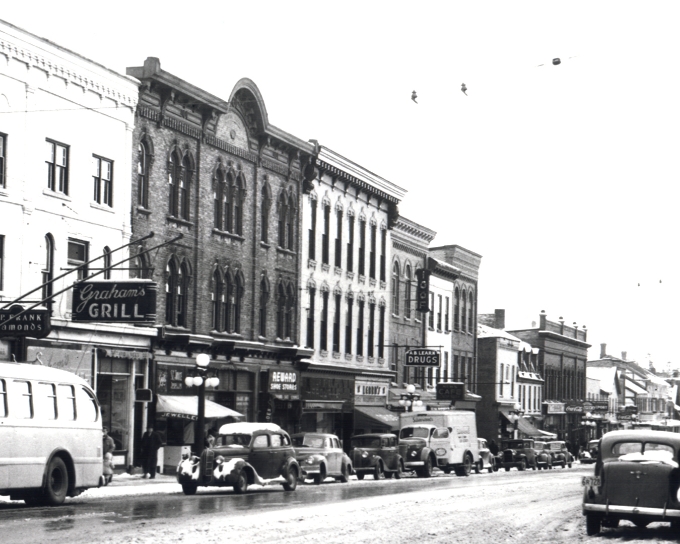
1948
A view of the east side of King Street south of Erb Street showing an electric-powered bus (trolley bus), globe street lamps and many automobiles and trucks.
1948
Marching band parading on King Street north of Erb Street during Waterloo Band Festival parade in 1948.
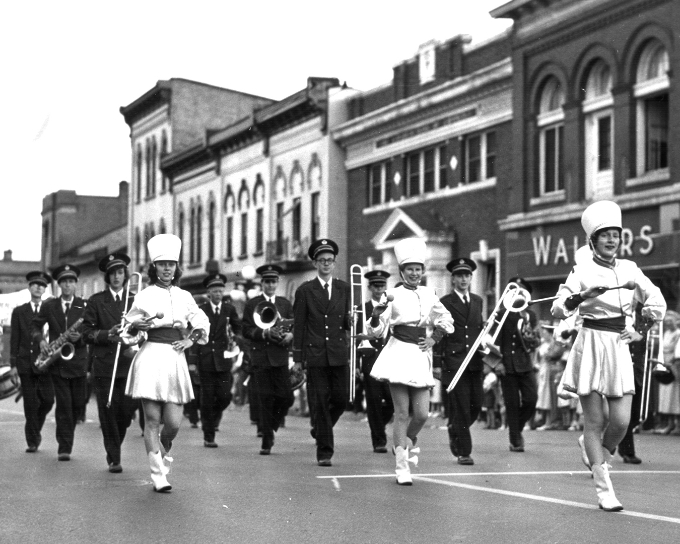
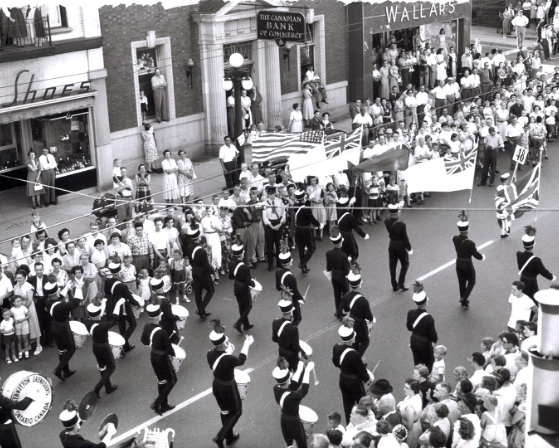
1950
Merritton marching band parading north on King Street near Dupont Street during Waterloo Band Festival parade in 1950. Businesses visible are Canadian Imperial Bank of Commerce, Gross Shoes and Wallar's Ladies Wear store.
1950
The first City Hall (formerly the Town Hall) was built at the corner of Albert and Erb Streets in 1874. The main floor contained the municipal offices and the library, the basement housed the market stalls. The Police force occupied the building ca. 1950s. The city offices moved in 1961 and the building was demolished in 1969.
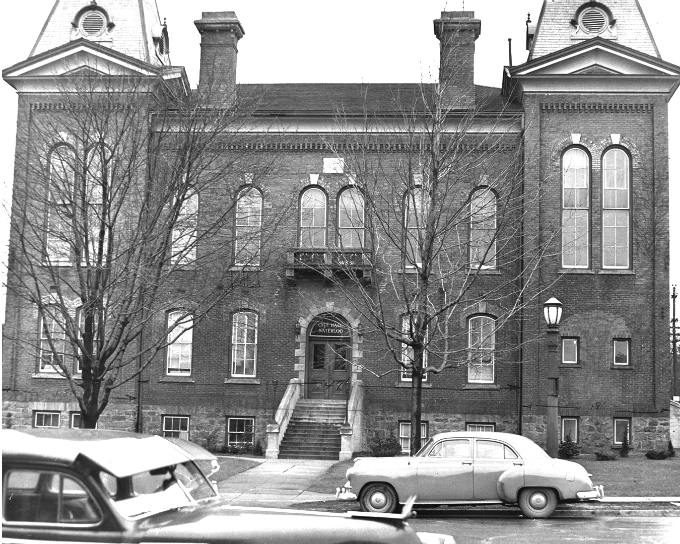
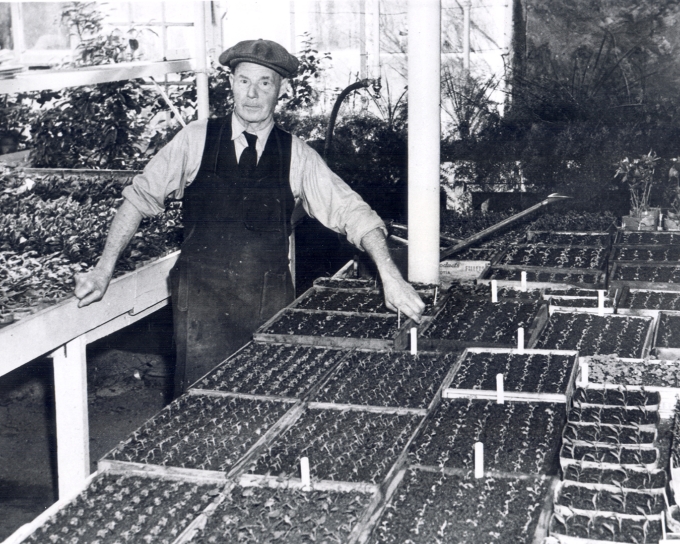
1950
A Photo of George Coltart, Waterloo Park Superintendent, tending to flowers and shrubbery.
1951
This photo was taken in 1951 outside of the Forsyth company - The Forsyth company started in 1903 as a distributor of pins, thread, buttons, celluloid collars and other items, then began selling shirts and ties as well as other clothing items and purchased the Star Whitewear building at 31 Young street at Duke street in Kitchener in 1908.
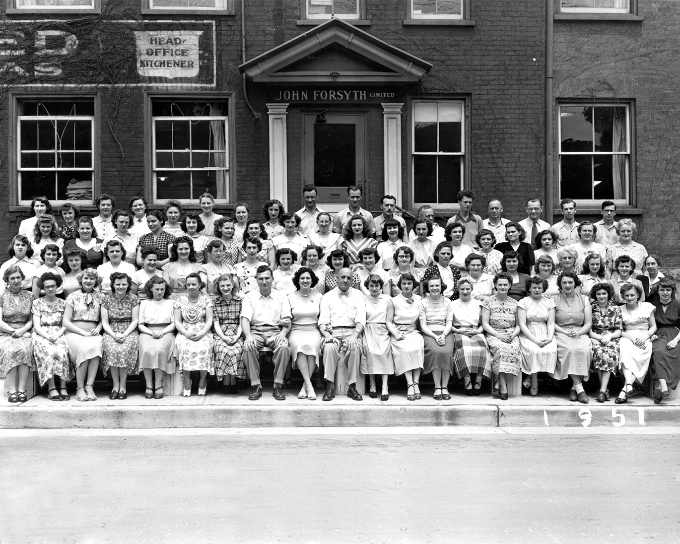
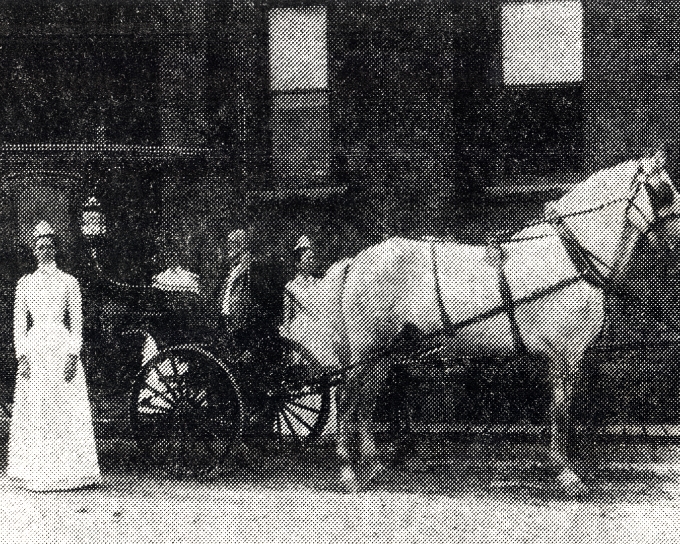
1951
Horse-drawn ambulance outside of Berlin-Waterloo Hospital (later Kitchener-Waterloo, then Grand River Hospital). Note the nurses in full-length dresses and caps standing with the ambulance.
1952
June 30th 1952: Horse-drawn conestoga wagon arriving at Doon Memorial Tower in Kitchener after travelling from Lancaster, Pennsylvania to commemorate the 155th anniversary of Mennonites from Lancaster settling in Waterloo County.
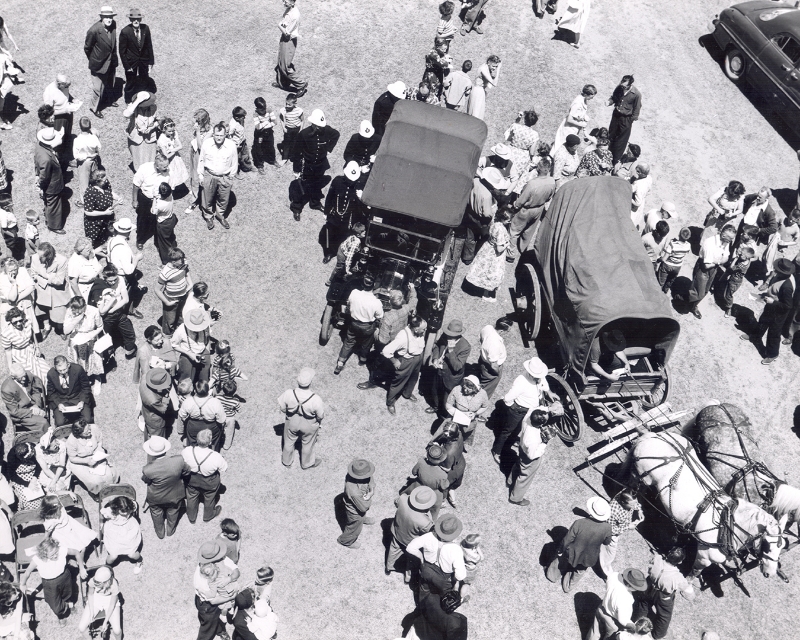
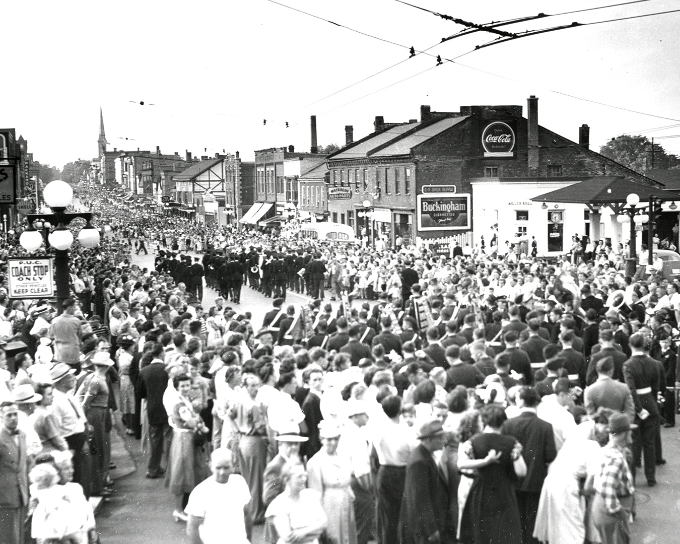
1956
The Start of the Waterloo Band Festival parade route at William and King Streets looking north on King. A band can be seen marching and another band lining up.
1965
The farmers' market building was built circa 1910 and demolished to make room for the current library building in 1965. A farmers' market had operated in the area since 1867, operating in the basement of the first town hall building since 1874.
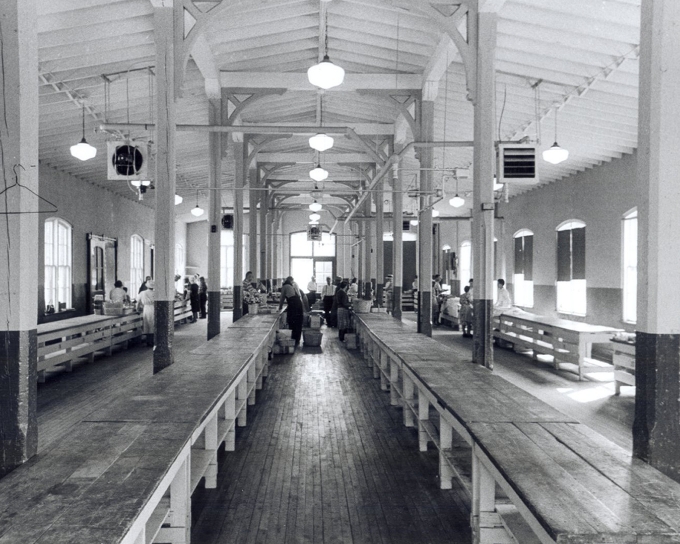
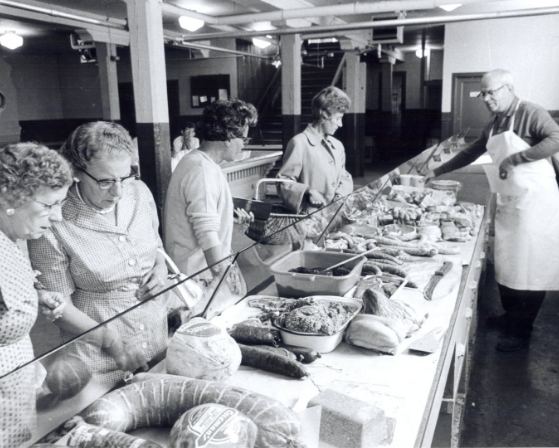
1965
July 31st 1965: Interior photo of Waterloo farmers' market on its final day showing customers and a vendor.
1970
Exterior of the Kent Hotel. Prohibition in Waterloo lasted from 1916 to 1927. Due to prohibition laws, tunnels ran along Princess Street from the basement of 49-53 Albert Street to the Huether Hotel. These tunnels could be found behind two glass display cases in the Lion’s Den restaurant in the basement of the hotel.
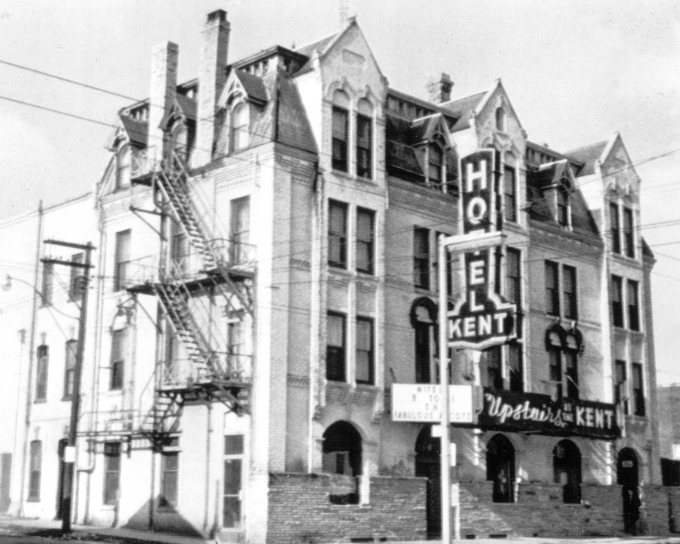
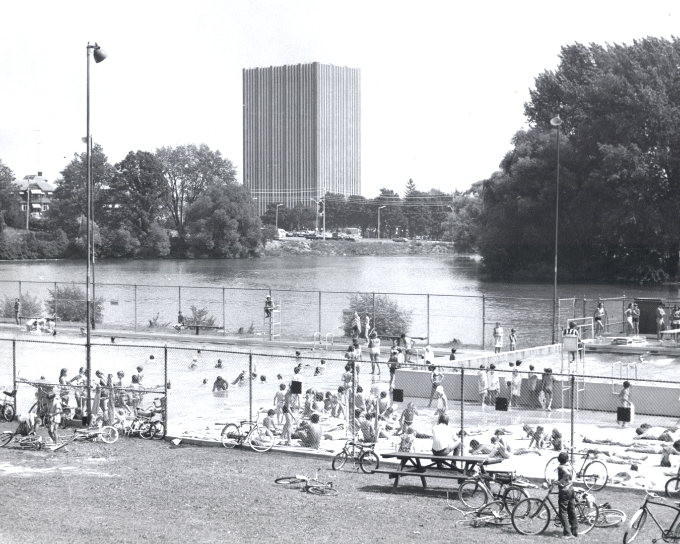
1973
Beginning in the 1950s, Waterloo Park began to undergo more significant change. Lion's Lagoon and the Park Inn concession were built around this time, and most of the original buildings (except the Eby farmhouse) started to be removed.
1973
Group photograph at Waterloo Square of Mayor Donovan P. Meston with some Waterloo council members posing outside by a display for the 25th anniversary of Waterloo becoming a city.
